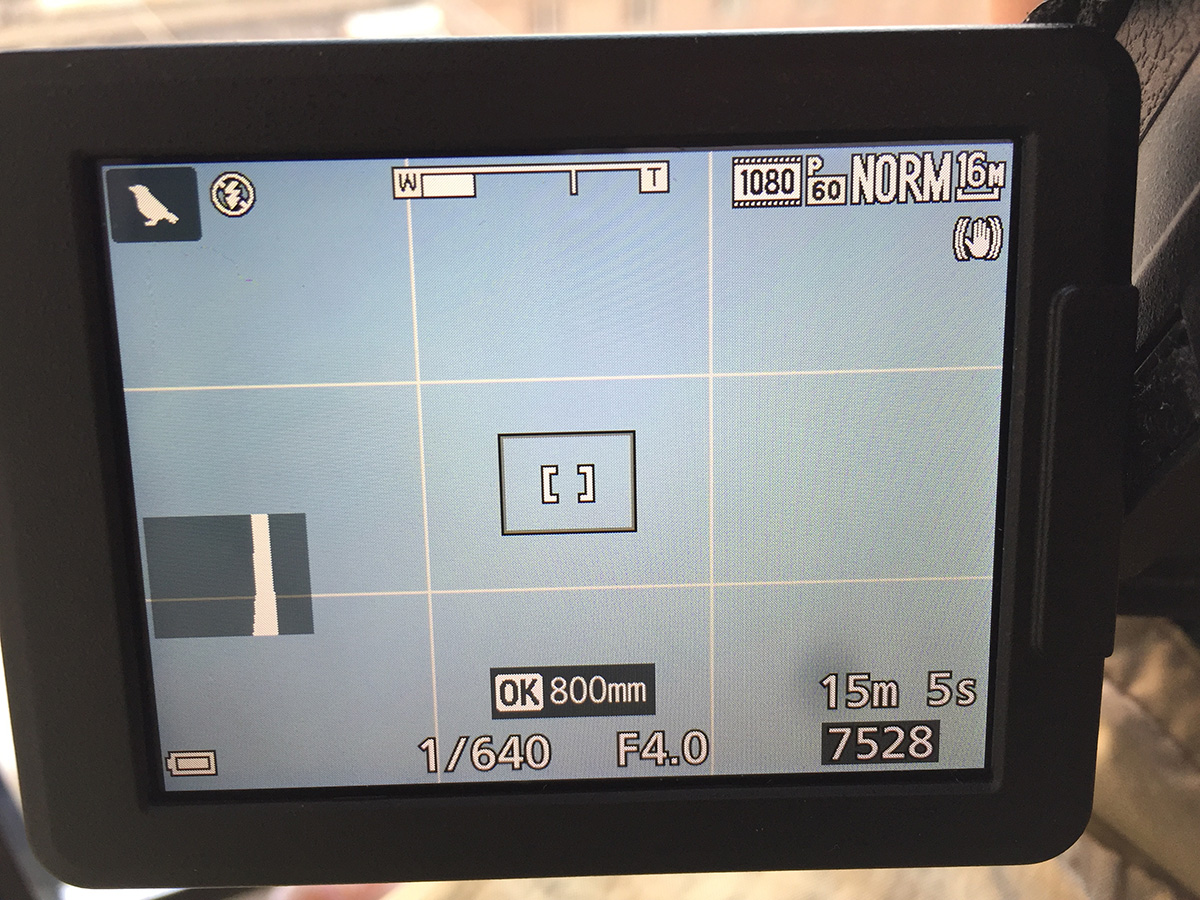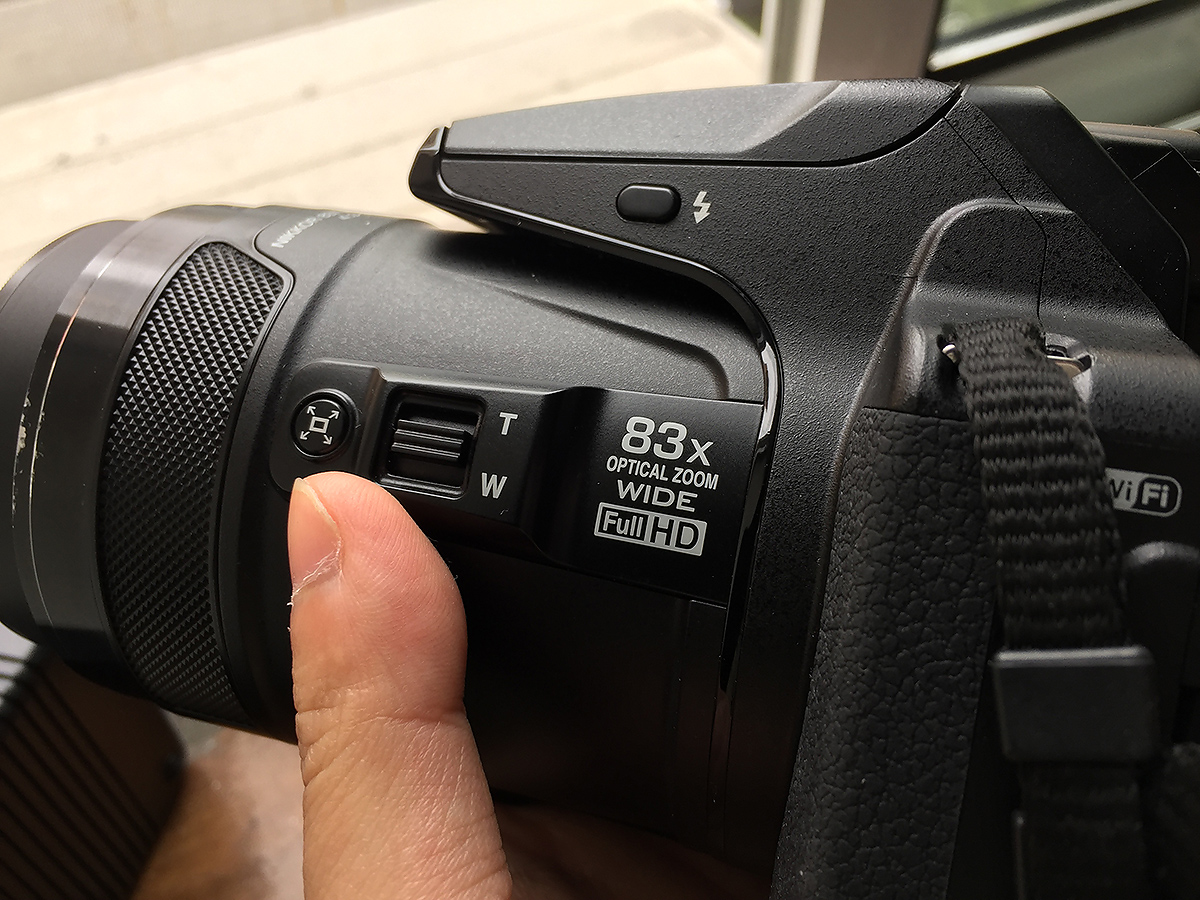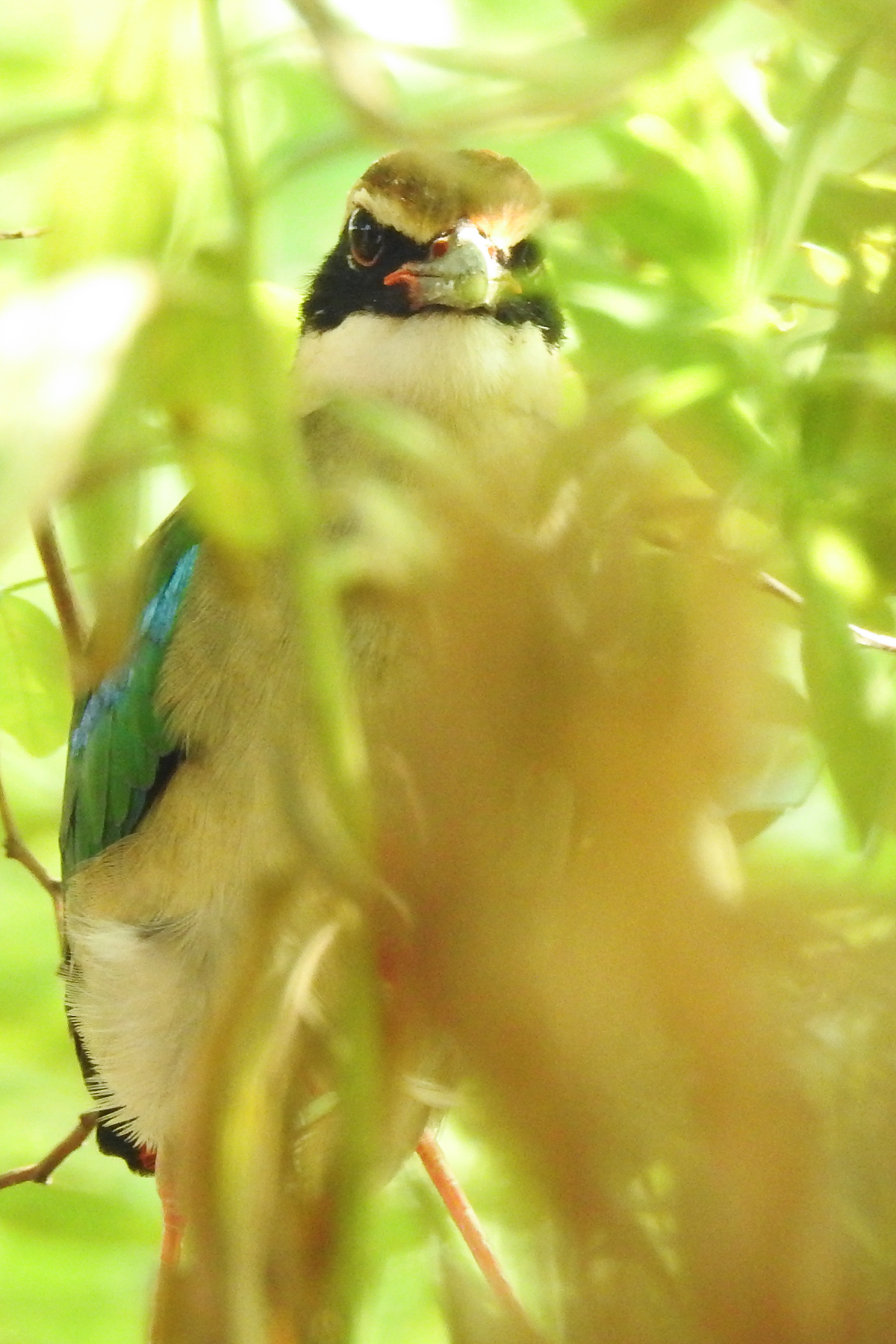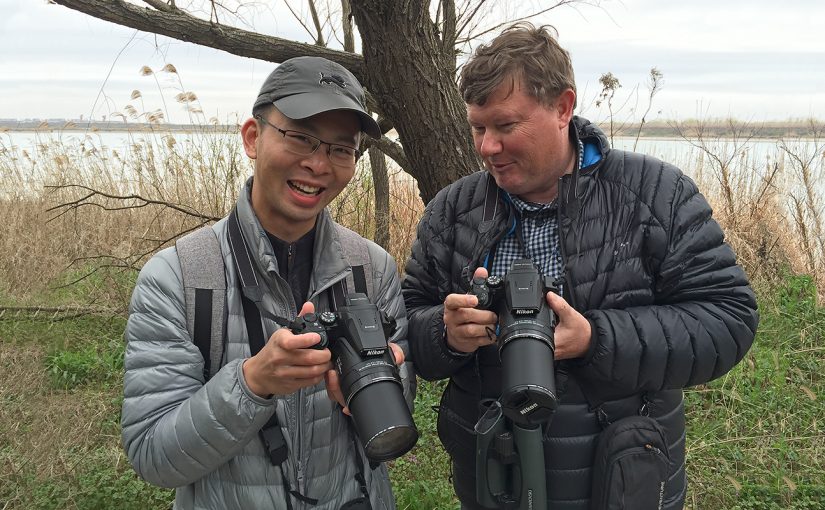Shanghai birders Kane Xu (L) and Michael Grunwell share a laugh after discovering that they both own the same model of camera, the Nikon Coolpix P900S. In this guest post, written exclusively for shanghaibirding.com, Kane tells us why he uses this versatile little imaging machine.
by Kane Xu (徐时开)
for shanghaibirding.com
I’m a birder, not a photographer. I’ve played around with compact digital cameras, DSLRs, and even, in my early years, SLR cameras with film. But I have no interest in the vast amount of DSLR bodies and lenses. What I need is a tool to record targets, especially birds I do not recognize.
My requirements are simple. First, my camera must be affordable; second, my camera must give me a realistic ability to shoot birds (in particular, it must have a long focal length); and third, my camera must be non-DSLR.
I have studied many brands, among them some types by Sony that are very compact in size and offer high magnification. But my experience with binoculars and field telescopes has taught me a fundamental physical rule: When you need high magnification, you must have a lens with a big diameter in order to allow more light to get through. Therefore, I finally gave up on those pocket digital cameras and bought the Nikon Coolpix P900S.
Let us look at the P900S as it relates to bird photography.
ADVANTAGES OF THE P900S
Birding mode. I love it! Most people set their camera to P, A, S, or even M mode when taking photos, ignoring the auto or preset modes. I always use birding mode.
Normally, when you power on your camera, the zooming position is at 24 mm (the widest view). In birding mode, you just press the OK button, and the camera automatically zooms to 800 mm.
With the automatic zoom to 800 mm, there is no need to hold the zooming trigger for seconds. And of course you can always continue zooming to the max value, 2000 mm, by turning the zooming trigger. Auto-zoom is a fast and convenient way to get your camera from power-on to ready-to-shoot.

Manual focusing. This is also a very important feature, especially for birders. There are situations in which your bird is in a bush with branches and leaves all around it. Your lens is desperate, always focusing on the leaf; your target jumps away before you take a shot. Under such circumstances, manual focus is a must. The P900S has a side trigger on the lens. See photo below.

Sometimes manual focus makes the difference between a blown opportunity and a useful record shot. When Fairy Pitta, a notoriously shy species, appeared in Shanghai in September 2016, I was happy to get the record shot below. Without manual focusing, even this image would have been impossible.

VR. Nikon claims a vibration-reduction level of 5 for the P900S. The VR on this model is really good. To see how good, watch the video below, in which I hand-hold the camera:
Great video quality. Even in low light, the P900S delivers super video. Here’s a sample:
DISADVANTAGES OF THE P900S
Portability. The P900S is big—as large as a DSLR. It definitely takes up space in a bag.
No continuous shooting. Despite the big size (mainly big lens), birding mode, and manual focusing, at its core the P900S is still a compact digital camera. Among other things, that means you cannot do continuous shooting, as in a DSLR. (A DSLR is like a machine gun; the P900S is like a sniper rifle.)
The view finder is not optical. There is a mini-LCD screen in the view finder, and it shows the very same elements as the big LCD on the body. The non-optical view finder makes finding a bird difficult in thick vegetation.
There is a solution, however: an extra finder. The video above, “Goldcrest at GuCun park,” was made with the help of the extra finder.

SUMMARY
Consider the following before you buy your own P900S:
Budget. A big lens and DSLR will get you better pictures, but never at a price as low as the P900S.
Goals. Do you want photos that could grace the cover of a magazine? If so, then the P900S may not be your camera. Are you content merely to make a very good visual record of the birds you see? If so, then the P900S may be right for you.
Size. Thought not a “cannon,” the P900S is also not a pocket camera.
Thanks for reading my review, and thanks to Craig for publishing it on shanghaibirding.com!


A good review. Thanks. It can also certainly help with (proof of) bird identification: “first shoot then look.” It happened to me quite often I did notice, or even worse, friends did notice, that I had seen a species not identified during the trip… In Europe we can only buy the 900, not the 900s. The s however does not stand for super but for simple, without GPS ….
I didn’t even know extra finders were a thing. Where would I get one? I’ve searched Amazon and Google without luck…is there a brand name?
So what do I do with my D810?
My P900 goes everywhere i go… light… obscene zoom range allowing 2000mm shots easily. Pictures good enough for internet. A bargain for what it does.
This post was on my mind for quite a while, inspired me to do research, and I just bought the P900s. Now to discover where on earth I can buy an extra finder!
I’m looking forward to taking it out here in Qinghai and seeing what it can do. Thanks for the recommendation and the helpful blog post. Nikon should sponsor this post!
Thanks for your review. I have a P900, not a P900s and on my P900 you can do continuous shooting in bird mode.